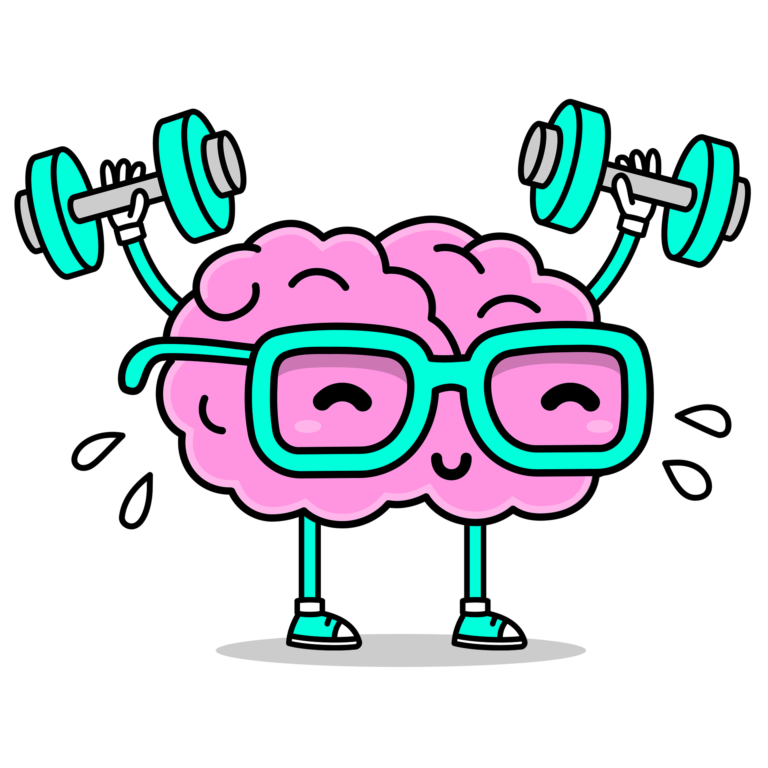Positive Psychology In The Workplace

Positive Psychology in The Workplace
Positive psychology is a scientific field that focuses on the study of human strengths and positive emotions, such as happiness, contentment, and well-being. It aims to understand and promote optimal functioning, resilience, and flourishing in individuals, communities, and organizations. In this article, we will provide a brief background and overview of the principles of positive psychology and dive into how it can be leveraged in the workplace.
History of Positive Psychology
The field of positive psychology emerged in the late 1990s as a response to the predominance of a problem-focused approach in psychology. Martin Seligman, a leading figure in the field, proposed that psychology should focus not only on the prevention and treatment of mental disorders but also on the promotion of positive emotions and virtues that enhance human flourishing.
Positive psychology builds on the work of earlier psychologists, such as Abraham Maslow and Carl Rogers, who emphasized the importance of self-actualization and the humanistic approach to psychology. Positive psychology also draws from ancient wisdom traditions, such as Buddhism and Stoicism, which offer insights into the cultivation of positive emotions and virtues.
The Core Principles of Positive Psychology
Positive psychology is grounded in several core principles, including the following:
- Focus on strengths: Positive psychology emphasizes identifying and leveraging individuals’ strengths and talents, rather than focusing on their weaknesses and limitations.
- Positive emotions: Positive psychology focuses on promoting positive emotions, such as happiness, joy, and gratitude, as they contribute to mental and physical well-being.
- Resilience: Positive psychology emphasizes developing resilience, or the ability to bounce back from adversity, as an important aspect of well-being.
- Growth mindset: Positive psychology promotes a growth mindset, or the belief that individuals can develop their abilities and skills through effort and practice.
- Meaning and purpose: Positive psychology emphasizes the importance of having a sense of meaning and purpose in life, as it contributes to overall well-being.
According to Martin Seligman, one of the founders of positive psychology, there are three types of happiness: the Pleasant Life, the Engaged Life, and the Meaningful Life.
The Pleasant Life is one of the three types of happiness proposed by Martin Seligman. It is achieved through experiencing pleasure and positive emotions and learning the skills to amplify those emotions. According to Seligman, the Pleasant Life is realized if we learn to savor and appreciate such basic pleasures as companionship, the natural environment, and our bodily needs.
The Engaged Life is another one of the three types of happiness proposed by Martin Seligman. It is achieved through living in a way that cultivates your virtues and strengths. According to Seligman, the Engaged Life involves the ability to invest in and make connections with work, intimate relationships, and leisure activities.
The Meaningful Life is the third type of happiness proposed by Martin Seligman. In positive psychology, a meaningful life is a construct having to do with the purpose, significance, fulfillment, and satisfaction of life. According to Seligman, a meaningful life is one in which you feel engaged, connected to purpose, and able to connect your gifts and passions with your highest values.
Applications of Positive Psychology
Positive psychology has practical applications in several domains, including the following:
- Education: Positive psychology interventions can enhance students’ well-being, engagement, and academic performance. For example, gratitude exercises can improve students’ social relationships and academic achievement.
- Health: Positive psychology interventions can improve physical and mental health outcomes. For example, mindfulness meditation can reduce symptoms of anxiety and depression.
- Work: Positive psychology interventions can enhance employees’ job satisfaction, productivity, and performance. For example, strengths-based coaching can help employees identify and leverage their strengths at work.
- Relationships: Positive psychology interventions can improve the quality of interpersonal relationships. For example, couples can benefit from practicing gratitude and expressing appreciation for each other.
Positive Psychology in the Workplace
Positive psychology focuses on leveraging individuals’ strengths and virtues to help them thrive. In the workplace, this means moving beyond merely addressing weaknesses or issues and actively cultivating positive experiences, relationships, and a sense of purpose among employees. The application of positive psychology can be seen in several key areas: fostering positive leadership, enhancing employee engagement, and building a supportive and inclusive culture.
Fostering Positive Leadership
Leaders play a crucial role in setting the tone for their teams. Positive leadership involves recognizing and valuing employees’ contributions, providing meaningful feedback, and inspiring a shared vision. By focusing on what employees do well and encouraging their development, leaders can build trust and motivate their teams to achieve more. Positive leadership also involves demonstrating resilience, optimism, and gratitude, qualities that can help teams navigate challenges more effectively.
Enhancing Employee Engagement
Employee engagement is a direct outcome of implementing positive psychology practices. Engaged employees are more motivated, productive, and committed to their organization’s goals. Strategies to enhance engagement include creating opportunities for employees to use their strengths daily, setting challenging but achievable goals, and ensuring employees feel valued and appreciated. Recognizing achievements, celebrating successes, and providing support for professional development are all ways to foster a sense of accomplishment and belonging.
Building a Supportive and Inclusive Culture
A positive workplace culture encourages collaboration, innovation, and mutual respect. Positive psychology emphasizes the importance of positive relationships as a cornerstone of well-being. Encouraging teamwork, open communication, and empathy can help build a supportive environment where everyone feels included. Activities that promote social connections, such as team-building exercises or social events, can enhance cohesion and a sense of community within the organization.
Practical Steps to Implement Positive Psychology
- Conduct Strengths Assessments: Utilize tools like the VIA Character Strengths Survey to help employees identify their strengths and find ways to apply them in their work.
- Implement a Recognition Program: Develop a system for recognizing and celebrating both individual and team achievements regularly.
- Foster Positive Communication: Encourage leaders and employees to express gratitude, share positive stories, and communicate constructively.
- Create Development Opportunities: Offer workshops, training sessions, and mentoring programs that focus on building positive psychological skills such as resilience, optimism, and mindfulness.
- Measure and Adjust: Regularly assess the impact of positive psychology initiatives on employee satisfaction, engagement, and productivity. Use feedback to refine and expand successful practices.
Critiques of Positive Psychology
Despite its many contributions, positive psychology has faced several critiques. Some scholars argue that positive psychology neglects the negative aspects of human experience, such as suffering and injustice. Others argue that positive psychology interventions can reinforce individualism and distract from broader social and political issues.
Positive psychology is a rapidly growing field that offers valuable insights into human flourishing and optimal functioning. By focusing on strengths, positive emotions, resilience, growth mindset, and meaning and purpose, positive psychology interventions can enhance individuals’ well-being and promote positive social and organizational outcomes. However, as with any scientific field, positive psychology is not without its critiques, and ongoing research and critical reflection are necessary to ensure that it continues to contribute positively to the broader society.
References
Meaningful life – Wikipedia. https://en.wikipedia.org/wiki/Meaningful_life.
Understanding a Meaningful Life – positivepsychology.org.ng. https://positivepsychology.org.ng/understanding-a-meaningful-life.
Realizing Your Meaning: 5 Ways to Live a Meaningful Life. https://positivepsychology.com/live-meaningful-life/.
What Is the Meaning of Life According to Positive Psychology. https://positivepsychology.com/meaning-of-life-positive-psychology/.
Understanding and Living Meaningful Life – https://www …. https://positivepsychology.org.ng/understanding-meaningful-life.
The 3 types of happiness — The Skill Collective. https://theskillcollective.com/blog/the-3-types-of-happiness.
What does Seligman mean by the engaged life? – The Handy Psychology …. https://www.papertrell.com/apps/preview/The-Handy-Psychology-Answer-Book/Handy%20Answer%20book/What-does-Seligman-mean-by-the-engaged-life/001137018/content/SC/52cb018982fad14abfa5c2e0_Default.html.
What is Engaged Living? — My Best Self 101. https://bing.com/search?q=Engaged+Life+positive+psychology.
On positive psychology – Martin Seligman | TED-Ed. https://ed.ted.com/lessons/martin-seligman-on-positive-psychology.
The Pleasant Life, the Engaged Life, and the Meaningful Life: What …. https://link.springer.com/article/10.1007/s10902-007-9074-1.
What is Engaged Living? — My Best Self 101. https://www.mybestself101.org/engaged-living-what.
Positive Psychology: Analyzing Happy People | HighExistence. https://www.highexistence.com/positive-psychology/.
(Martin Seligman & Positive Psychology: Theory and Practice. https://www.pursuit-of-happiness.org/history-of-happiness/martin-seligman-psychology/.
Positive Psychology Techniques (Guide) | Therapist Aid. https://www.therapistaid.com/therapy-guide/positive-psychology-techniques.
The Psychology of Happiness – Peter Fisk. https://www.peterfisk.com/2020/02/the-psychology-of-happiness-authentic-happiness-is-about-more-than-pleasure-it-requires-engagement-and-a-sense-of-purpose-too/.
Martin Seligman & Positive Psychology: Theory and Practice. https://www.pursuit-of-happiness.org/history-of-happiness/martin-seligman-psychology/.
The 3 types of happiness — The Skill Collective. https://theskillcollective.com/blog/the-3-types-of-happiness.
The 5 Types of Happiness in Psychology | Its Psychology. https://itspsychology.com/types-of-happiness-in-psychology/.
The Science of Happiness in Positive Psychology 101. https://positivepsychology.com/happiness/.
What Is Happiness and Why Is It Important? (+ Definition). https://positivepsychology.com/what-is-happiness/.
Positive Psychology: 5 key concepts (and how journalling can help with …. https://theskillcollective.com/blog/positive-psychology-concepts.
Positive Psychology – Verywell Mind. https://www.verywellmind.com/what-is-positive-psychology-2794902.
What is Positive Psychology? – New Trader U. https://www.newtraderu.com/2023/04/14/what-is-positive-psychology/.
Positive Psychology: How It Works & What to Expect – Choosing Therapy. https://www.choosingtherapy.com/positive-psychology/.
Positive Psychology – GoodTherapy. https://www.goodtherapy.org/learn-about-therapy/types/positive-psychology.






